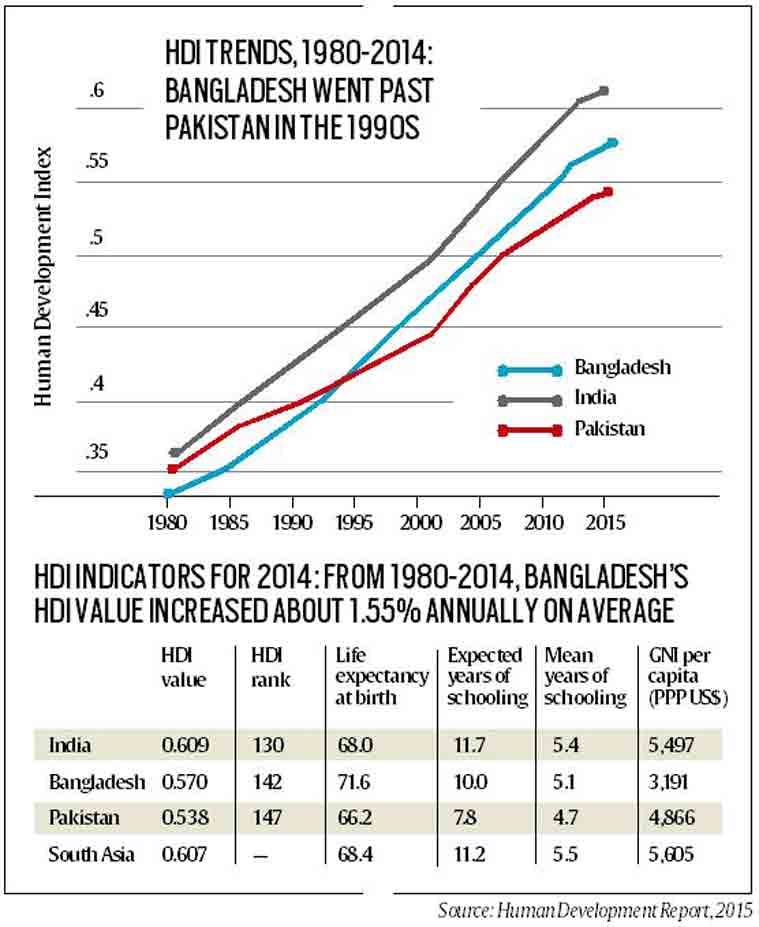Sushant Singh
On June 20, 1947, the Bengal legislative assembly voted overwhelmingly to break away from India. A referendum on July 7 in Sylhet decided in favour of Pakistan, and on August 15, 1947, East Pakistan was a reality. More than half of Pakistan’s population lived in its eastern wing, separated from its western wing by 1,300 miles of Indian territory, but united by a common faith. “…That fantastic bird of a place, two Wings without a body, sundered by the landmass of its greatest foe, joined by nothing but God,” wrote Salman Rushdie in Shame.
The differences between the East and West were visible early. On February 25, 1948, Dhirendranath Datta spoke passionately in Pakistan’s National Assembly seeking national language status for Bengali along with English and Urdu — only to have his amendment defeated, and suffer a rebuke from Prime Minister Liaquat Ali Khan. The next month, student protesters in East Pakistan shouted down Mohammed Ali Jinnah himself after he rejected their demand for recognising Bengali as an official language. On February 21, 1952, police shot dead agitating student protesters; it was this day — declared International Mother Language Day by UNESCO in 1999 — that most Bengali intellectuals say “signified the shattering of the dream of Pakistan”.
The failure of Urdu- and Punjabi-speaking West Pakistanis to understand Bengali nationalist aspirations was the result of a sense of superiority and arrogance; the Bengali resentment over injustice and humiliation was not just cultural — it was also a result of the economic marginalisation of East Pakistan. Foreign exchange earned from the export of East Pakistani jute was used to import equipment for the industrialisation of West Pakistan, foreign aid was diverted to West Pakistan projects, and despite an increase in public funds allocated to East Pakistan in the late 1950s, the economic disparity between the two wings — reflected in their GDP growth rates — remained stark.
In the tightly centralised Pakistani state, run undemocratically by a military-bureaucratic oligarchy dominated by West Pakistanis, Bengalis had no political say. The decision-making elite overlooked East Pakistan’s demographic and electoral majority, as well as their political demands. The situation worsened after Field Marshal Ayub Khan imposed Martial Law in 1958.
In November 1969, General Yahya Khan took over from Ayub and announced elections under a “legal framework for general elections”. The elected National Assembly was to finalise a constitution within 120 days. In the elections held on December 6, 1970, Sheikh Mujibur Rahman’s Awami League, which contested on a six-point programme, won 160 of the 162 seats in East Pakistan, and none in West Pakistan. Zulfikar Ali Bhutto’s Pakistan People’s Party won 81 of the 138 seats in West Pakistan, but Mujib had a clear overall majority in the House to become the Prime Minister. But Bhutto, who was backed by the Pakistan Army, claimed parity with Mujib saying he was the sole representative of the people of West Pakistan.
After political negotiations failed, Yahya decided to crack down. On March 1, he announced the indefinite postponement of the National Assembly; Mujib responded by calling a strike on March 3. One hundred and seventy-two people were killed and 358 others were wounded during that week, according to official figures.
On March 25, with Awami League cadre also in the streets, Yahya met military officers at Dhaka and gave the go-ahead for the final assault. At 11.30 pm on March 25, Operation Searchlight began simultaneously across the whole of East Pakistan. At least 26,000 people were killed, according to Pakistan’s Hamoodur Rahman Commission; Bangladesh, however, claims that as many as 3,000,000 were killed by Pakistani soldiers in a brutal campaign of rape, murder and pillage. Some 10 million refugees fled to India.
India declared support for the Awami League, opened the East Pakistan border, and the BSF offered limited aid to the Bengali resistance. The Indian leadership decided not to directly intervene, but chose to get involved: the Army’s Eastern command took over responsibility for East Pakistan operations on April 29 and, on May 15, launched Operation Jackpot, a full-fledged operation to recruit, train, arm, equip, supply and advise Mukti Bahini fighters engaged in guerrilla warfare against the Pakistan military. India also launched a global diplomatic offensive to help create Bangladesh.
By late November, India was ready for a military offensive. When the Pakistan Air Force launched pre-emptive strikes on airfields in Western India on December 3, 1971, India responded by formally declaring war in the wee hours of December 4. The speed and scale of victory was due to leadership, logistics, strategy — but also chance and contingency. The instrument of surrender was signed by Lt Gen A A K Niazi with Lt Gen J S Aurora watching, at Dhaka at 4.55 pm on December 16, 1971. That remains the abiding image of the 1971 War.

No comments:
Post a Comment